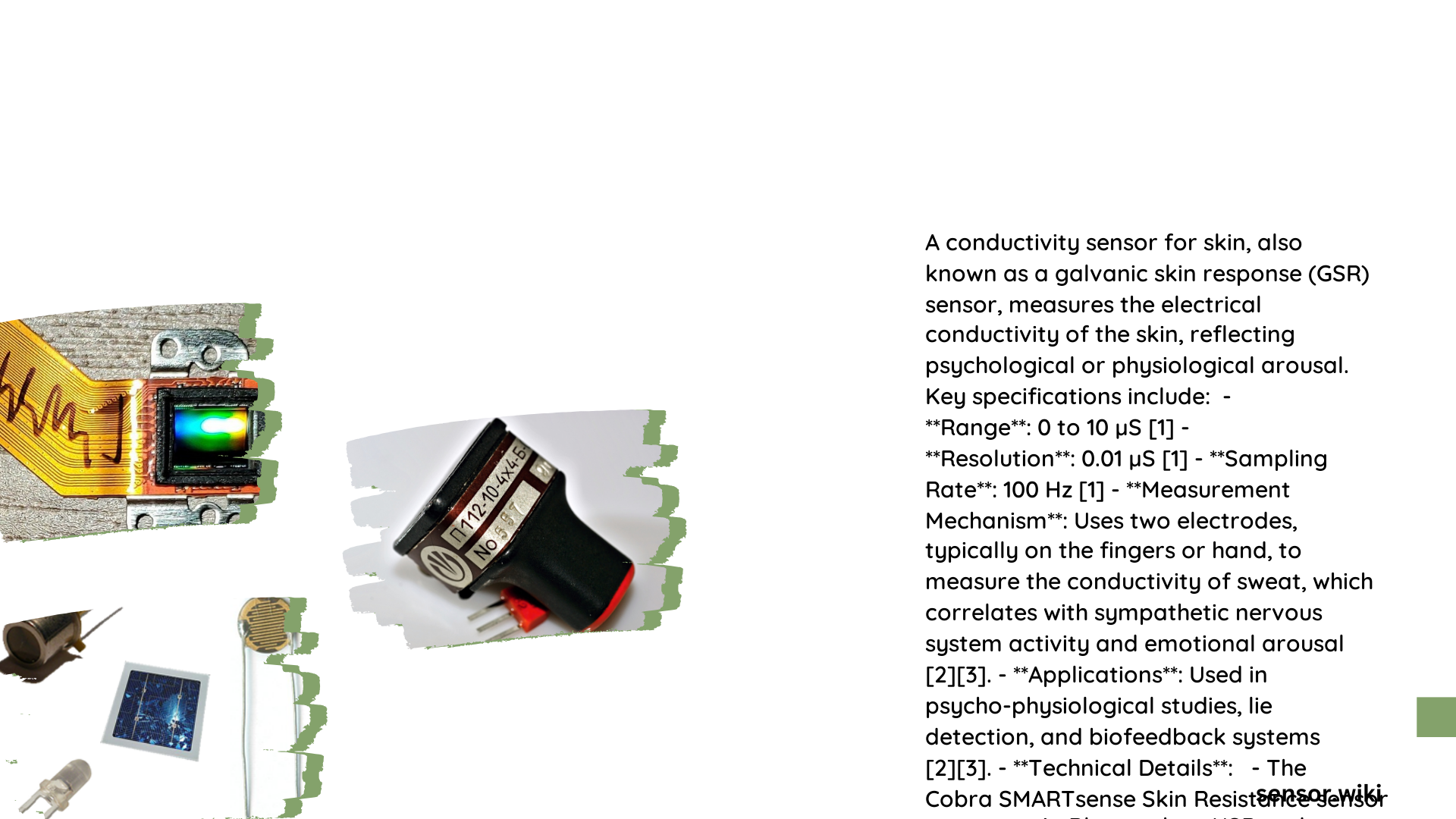Conductivity sensors for skin are advanced devices designed to measure the electrical conductance of human skin. These sensors play a crucial role in various fields, including medical research, psychological studies, and biofeedback applications. By detecting minute changes in skin conductance, these sensors provide valuable insights into physiological and emotional states, making them indispensable tools for understanding human biology and behavior.
What is a Conductivity Sensor for Skin?
A conductivity sensor for skin, also known as a skin conductance sensor or galvanic skin response (GSR) sensor, is a device that measures the electrical conductivity of the skin. It works by applying a small electrical voltage through two electrodes placed on the skin, typically on two fingers of one hand. The skin acts as a variable resistor in this circuit, and the sensor measures the changes in conductance, which is the inverse of resistance.
How Does a Conductivity Sensor for Skin Work?

Conductivity sensors for skin operate on the principle of bioelectrical impedance analysis (BIA). Here’s a breakdown of the process:
- Two electrodes are placed on the skin, usually on adjacent fingers.
- A tiny, imperceptible electrical current is passed between these electrodes.
- The sensor measures the ease with which this current flows through the skin.
- Changes in sweat gland activity, controlled by the sympathetic nervous system, affect the skin’s conductivity.
- The sensor detects these changes and converts them into measurable data.
What are the Key Specifications of Conductivity Sensors for Skin?
When evaluating conductivity sensors for skin, several key specifications are important to consider:
- Measurement Range: Typically measured in micro-Siemens (µS), with ranges often between 0 to 30 µS.
- Response Time: Generally real-time, providing continuous measurements.
- Electrode Materials: Commonly made of silver/silver chloride (Ag/AgCl) for optimal conductivity.
- Sensitivity: Ability to detect minute changes in skin conductance.
- Accuracy: Precision in measuring and reporting conductance values.
What are the Applications of Conductivity Sensors for Skin?
Conductivity sensors for skin find applications in various fields:
- Psychological Research: Measuring emotional arousal and stress responses.
- Medical Diagnostics: Assessing autonomic nervous system function.
- Biofeedback Therapy: Helping individuals learn to control their physiological processes.
- Lie Detection: As a component in polygraph tests.
- Human-Computer Interaction: Developing emotion-aware technologies.
What Challenges are Associated with Skin Conductivity Measurements?
While conductivity sensors for skin are powerful tools, they face several challenges:
- Environmental Factors: Temperature and humidity can affect readings.
- Skin Types: Variations in skin type (oily, dry, sensitive) can influence measurements.
- External Substances: Lotions, sweat, and other substances on the skin can impact accuracy.
- Individual Differences: Baseline conductivity levels can vary significantly between individuals.
How Can These Challenges be Addressed?
To mitigate the challenges associated with skin conductivity measurements, consider the following solutions:
- Controlled Environment: Maintain consistent temperature and humidity during measurements.
- Proper Sensor Placement: Ensure correct and consistent electrode placement.
- Regular Cleaning: Clean sensors with alcohol wipes between uses.
- Calibration: Regularly calibrate the sensor to maintain accuracy.
- Multiple Measurements: Take several readings to establish a reliable baseline.
What is the Cost and Lifespan of Conductivity Sensors for Skin?
The cost and lifespan of conductivity sensors for skin can vary:
- Price Range: Typically between $300 to $500 for professional-grade sensors.
- Maintenance Costs: Include replacement of Ag/AgCl sensor snaps after about 50 uses.
- Lifespan: Often comes with a 1-year manufacturer warranty, but proper maintenance can extend usability.
- Bulk Purchasing: May offer discounts for larger orders, especially from authorized distributors.
How to Choose the Right Conductivity Sensor for Skin?
When selecting a conductivity sensor for skin, consider these factors:
- Intended Use: Research, clinical, or personal use?
- Measurement Range: Ensure it covers the expected conductance levels.
- Compatibility: Check if it integrates with your existing systems or software.
- Portability: Consider size and weight if mobility is important.
- User-Friendliness: Look for sensors with intuitive interfaces and clear documentation.
What Future Developments Can We Expect in Skin Conductivity Sensing?
The field of skin conductivity sensing is evolving rapidly. Some potential future developments include:
- Miniaturization: Smaller, more discreet sensors for continuous monitoring.
- Wireless Capabilities: Enhanced connectivity for real-time data transmission.
- AI Integration: Advanced algorithms for more accurate interpretation of conductivity data.
- Multi-Modal Sensing: Combining conductivity with other biometric measurements for comprehensive analysis.
Conclusion
Conductivity sensors for skin offer a window into the complex world of human physiology and emotion. As technology advances, these sensors are becoming more accurate, versatile, and accessible. Whether used in research, clinical settings, or personal health monitoring, conductivity sensors for skin continue to play a crucial role in our understanding of the human body and mind.
References:
1. Skin Conductance Sensor – bio-medical.com
2. Skin Conductance Sensor SA9309M – LifeMatters
3. Skin Conductance Sensor – SA9309M – Thought Technology Ltd.
